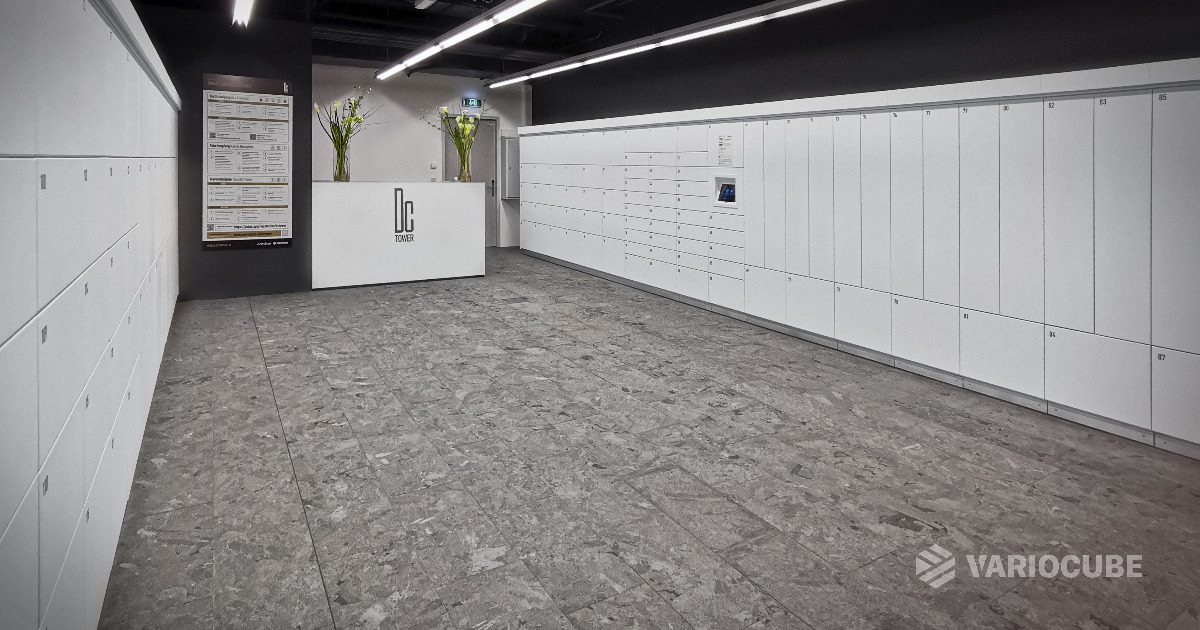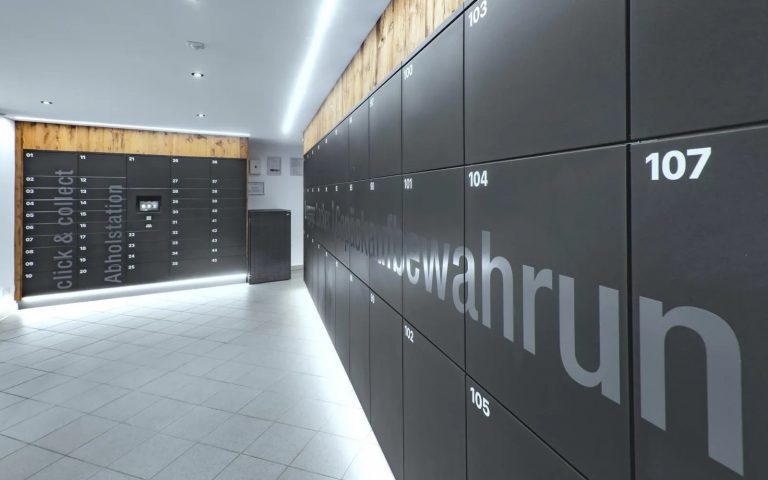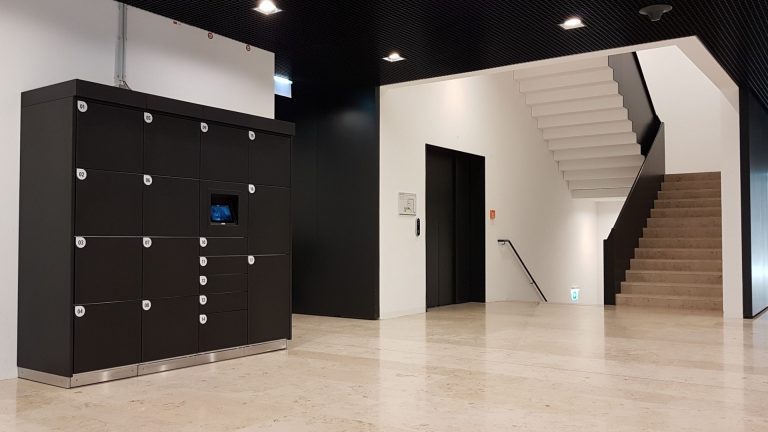LOGISTICS 2030+: Increasing acceptance and number of operator-independent parcel boxes in Lower Austria and Vienna - the environment is to be relieved through better plannability of CEP routes and increased delivery quotas. The parcel boxes are increasingly being combined with other services.
In 2016, the project "Sustainable Logistics 2030+ Lower Austria-Vienna" (in short: "Logistics 2030+") was launched. Representatives from the transport and logistics industry as well as those responsible for urban and regional planning came together to develop future-proof solutions and suitable measures for the requirements of freight mobility in the Vienna-Lower Austria region.
In a three-year stakeholder process, important topics were identified, future scenarios for the next ten years were developed and an action plan was defined, which should enable practical implementation with concrete packages of measures. One of the 35 topics addressed is dedicated to optimising the last-mile sector. The aim was to "develop and implement efficient solutions for parcel delivery", as stated in the project documents.
31 percent increase
The first interim results make the project team optimistic: The entire network of parcel boxes grew by 31 percent from 219 to 287 locations in Vienna and Lower Austria from October 2019 to April 2020 alone. Added to this is the fact that Austrian Post is now opening up to operator-independent systems - the conditions for this have been defined. Other services (Click & Collect, locker solutions, etc.) related to parcel boxes have also been initiated and developed.
Andrea Faast (Head of Location and Infrastructure Policy at WKW) confirms the need to work on efficient parcel delivery right now and emphasises to Verkehr: "The increasing demand for open parcel boxes has shown that the time is now ripe. We are no longer talking about laboratory trials here, but about systems that have already been tested in practice. This can achieve CO2 savings by reducing the volume of traffic."
Logistics expert Gerald Gregori also confirms the popularity of the primarily open systems. "The project has now also reached politicians up to the highest levels of the state governments. They see that the parcel boxes are increasingly becoming an important exchange point for products and services of all kinds. Local traders and farmers in particular can also benefit from offering their products online via Click & Collect and the customer can then pick them up from the parcel box," says Gregori.
Revitalisation of the town centre
For Christian Popp (Office of the Lower Austrian Provincial Government, Department of Regional Planning and Overall Transport Affairs), the increasing number of operator-independent parcel boxes is an important building block for saving costs and the environment. "CEP delivery trips can thus be further optimised. We see a lot of potential for multifunctional parcel boxes, especially in more remote areas to revitalise town centres. In addition, highly frequented locations, such as public transport stops, are naturally suitable for installing parcel boxes. For example, we were able to bring together Wiener Lokalbahnen and the Spar retail group and realise a project at Griesfeld station," Popp emphasises.
Standardisation and financing
The next steps in the project are clear to Gregori: "First of all, uniform standards of the parcel boxes have to be defined and implemented, among other things, for communication with the customers, and the right locations have to be selected. However, it will be very decisive that Austrian Post and Amazon also deliver into the open systems. The former are now opening up under certain conditions, basically to neutral systems."
Another crucial point for success is the financing model. There are several possibilities here. In residential buildings, the financing of the installation, maintenance and repair can be settled via the operating costs or the CEP service providers pay about 50 to 70 cents per parcel, as is already customary at various parcel pick-up shops. In less frequented locations of the parcel boxes, the municipalities or provinces will also have to take over part of the costs, otherwise they will hardly be profitable. "High-frequency locations, however, should be self-financing," Popp emphasises to Verkehr.
CO2 saving
Emanuel Rom, responsible for sales Austria East at Renz, currently the largest operator-independent system provider, also sees a lot of potential to support regionality through open parcel boxes." This way, customers can also be reached 24/7 by bakeries, cobblers and service providers, among others. We expect to set up a total of 100 systems in Vienna and Lower Austria this year," he emphasises. "Especially in times like these, we think it's great that we can contribute to saving CO2 and relieving the burden on transport routes," he adds.
Rollout delay
The parcel stations set up by A1 also extend opening hours for both local retailers and their customers. "Parcel service providers can use our open systems as an alternative delivery location if the recipient is not at home. The rollout is still ongoing, but due to the Covid 19 crisis there are delays," Sigrid Bachinger (CEO Unit A1 External Communications, A1 Telekom Austria) elaborates.
Market growth
"We will also soon be installing cooling elements for temperature-sensitive goods in our parcel stations," says Franz Spindler, Managing Director at Variocube. "Even though the Corona crisis has slowed us down a bit, we want to double the number of locations of our parcel boxes in the project area by the end of 2020. At the beginning of the lockdown, there were occasional delays by the authorities as to whether parcel boxes were relevant to the system or not. In the meantime, there is no longer any discussion about this," says Spindler.
Lukas Wieser, Head of Partnerships at Salzburg AG's "Myflexbox" innovation project, also sees the potential of operator-independent systems. Myflexbox will now also join Logistik 2030+, as the exchange with national key players is crucial, as Wieser says. "Without networking, there is no smart logistics," he tells Verkehr. He wants to increase the number of Myflexboxes in Austria into the three-digit range within the next twelve months.





















